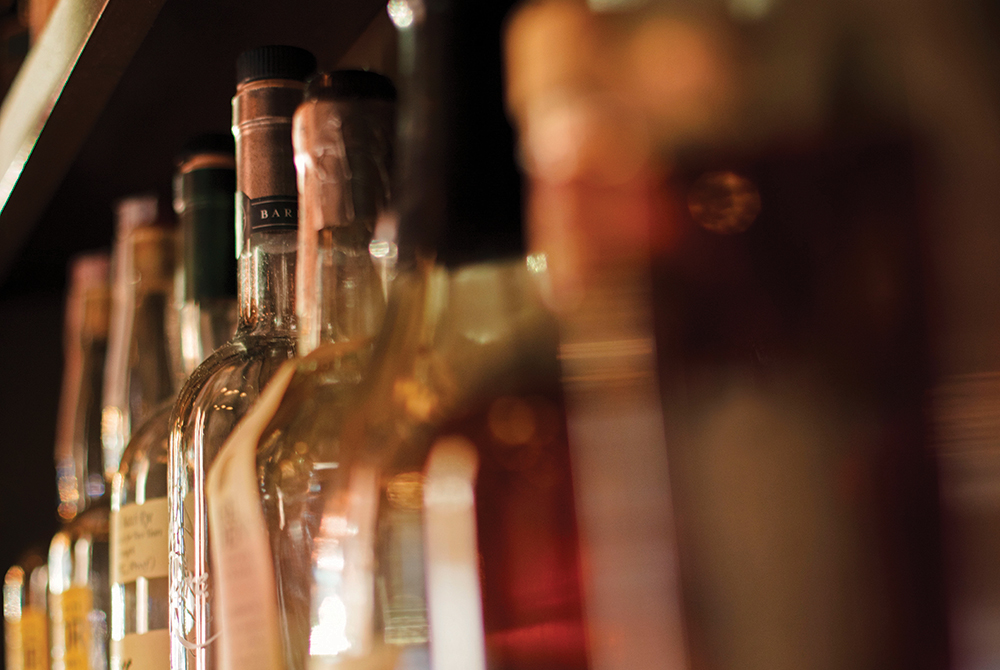American Blends to Try
A renaissance of mingled spirits to inspire new perspective.
Article by Fred Minnick
Long before the bourbon craze, distillers gave private tours and used the words mingled or married to describe the process of blending barrels together. As was often the case, somebody in the audience asked why they used these strange words when the term blended fit so perfectly to describe the action of, you know, blending barrels. “Blending is a dirty word,” the distiller would say without much explanation.
And so the tour continued and life moved on. But for some, the “dirty word” comment lingered like a hanging participle: You didn’t quite know what to do with it. If that’s you, as it was me a long time ago, let’s analyze this dirty word in American whiskey.
Early Blends In American whiskey’s beginnings, distillers sold barrels to wholesalers and rectifiers, who then blended it with anything. I mean anything. Some rectified recipes called for rattlesnake heads and tobacco spit—worst-case scenarios. Can you imagine kicking back somebody else’s chew saliva after a hard day’s work?
Many blenders did not disclose that their products were a hodgepodge of spirits and the occasional tobacco plug, but still called their whiskey “bourbon” or “rye” without noting that it was different than the unadulterated stuff. In reaction, the wholesalers who were not adding other ingredients advertised their whiskeys as “pure” and “straight.” They even went so far as to pay licensed assayers to testify that their whiskey was good, giving prescribing doctors and tavern owners confidence in their medicine. When that wasn’t enough, straight distillers lobbied Congress to create and pass the Bottled-in-Bond Act of 1897, which gave consumers confidence in the purity of their whiskey.

Wholesalers, however, still labeled blended whiskey “bourbon” and “rye” without penalty. This, in part, led to the Pure Food & Drug Act of 1906, and later the Taft Decision of 1909, in which the president specified our first federal definitions of whiskey. For a 40-year stretch, American distillers and wholesalers battled one another in courts, Congress, and the saloons to win over consumers. After Prohibition, Canadian blended whiskey also made a stronger play for American consumers, which also led to courts, Congress, and tavern battles. By the 1960s, after 100 years of hating blends, American distillers chose to eliminate the word from their vocabulary. But that’s all changing.
New Blends Far away from the blue-blood distillers in Tennessee and Kentucky, Utah’s High West made the first blend that I recall being noteworthy. In 2010, High West’s Bourye, a blend of straight bourbon and rye, caught my attention as well as that of other reviewers. Was it possible that American blends weren’t all that bad? Well, if you went to the liquor store to buy other blends then, you’d see Seagram’s Seven Crown on the bottom shelf next to Kessler’s, and you steered clear. If not for Coke, these blended whiskeys would not be palatable. But because High West showed that quality blends were possible, other brands started experimenting. Now, after High West sold for $160 million, American blended whiskey is one of the most intriguing categories in the spirits marketplace.
Blends to Buy
Michter’s Sour Mash Celebration, $5,000
This incredibly complex blend features three rye and three bourbon barrels ranging from 10 to 33 years old. I scored the 2016 a 94 for Whisky Advocate, one of my highest ratings ever. It’s the nuance of a French bakery meeting the tang of the greatest barbecue pit. You have to taste it to believe it.
High West Midwinter’s Night Dram, $90
A blend of straight rye whiskeys finished in port and French oak barrels, this annual limited-edition release embodies excellence in every pour, and it’s in the league of the greatest American whiskeys on the market.
Barrell American Whiskey Blends, Batch 2, $65
A blend of whiskeys finished in sherry barrels, this release presents baking spices, roasted nuts, and soft hints of caramel. All the Barrell releases are worth checking out, but you’ll enjoy this one, especially if you like sherry.





